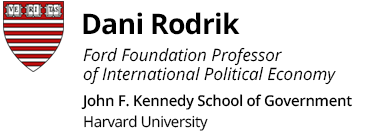Research Papers
Is Populism Necessarily Bad Economics?. AEA Papers and Proceedings 2018. 2018;(108) :196-199.Abstract
Second Thoughts on Economics Rules. Journal of Economic Methodology. 2018.
What Do Trade Agreements Really Do?. Journal of Economic Perspectives. 2018;23 (2) :73-90.Abstract
Populism and the Economics of Globalization. 2018.Abstract
Journal of International Business Policy, 2018
Rebalancing Globalization. 2017.
October 2017
. Structural Change, Fundamentals and Growth: A Framework and Case Studies. 2017.Abstract
NBER Working Paper, May 2017
An African Growth Miracle?. Journal of African Economies Advance Access. 2016.Abstract
Revised version of the paper written for the Center for Global Development, Richard H. Sabot Lecture, on April 24, 2014.
The Elusive Promise of Structural Reform: The Trillion-Euro Misunderstanding. Milken Institute Review. 2016;18 (2) :26-35.
Is Liberal Democracy Feasible in Developing Countries?. Studies in Comparative International Development. 2016.Abstract
Work and Human Development in a Deindustrializing World.; 2015. PDF
UNDP Human Development Report Office, 2015
Premature Deindustrialization. Journal of Economic Growth. 2015;21 :1-33.Abstract
. Globalization, Structural Change, and Productivity Growth, with an Update on Africa, in World Development. Vol 63. ; 2014 :11-32.Abstract
